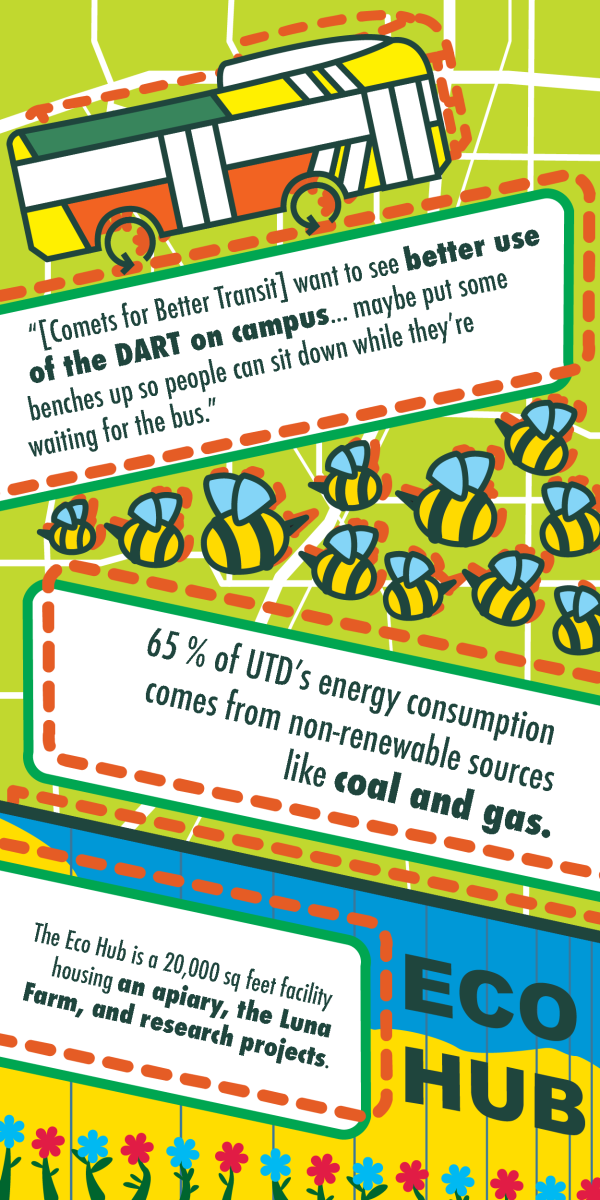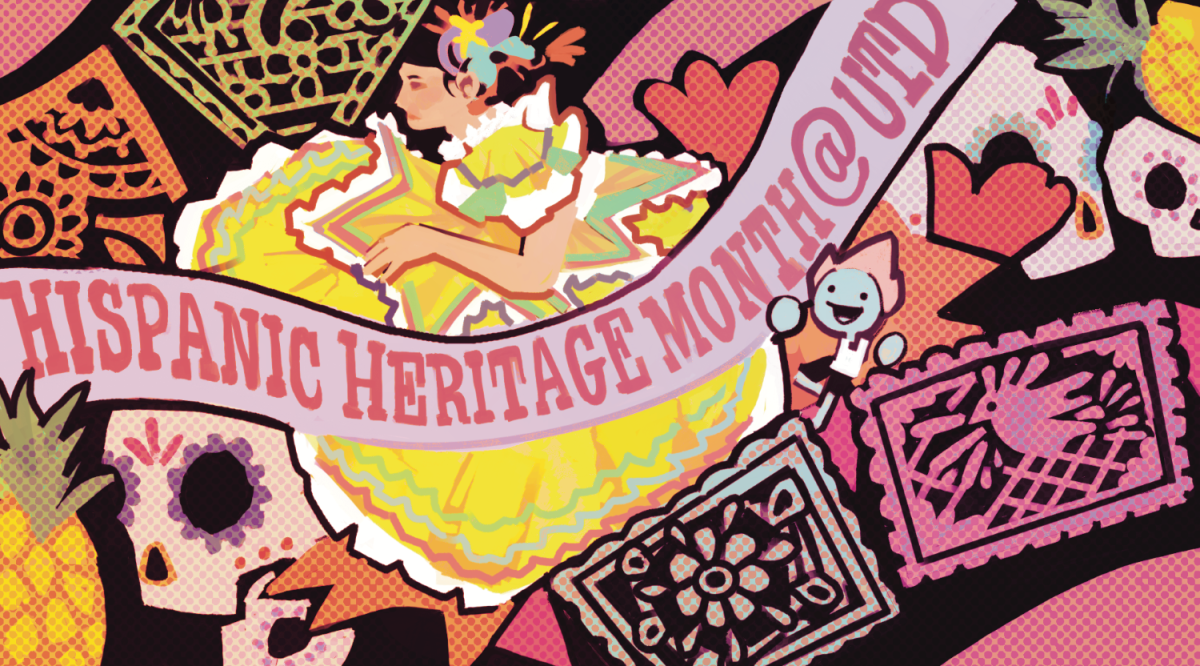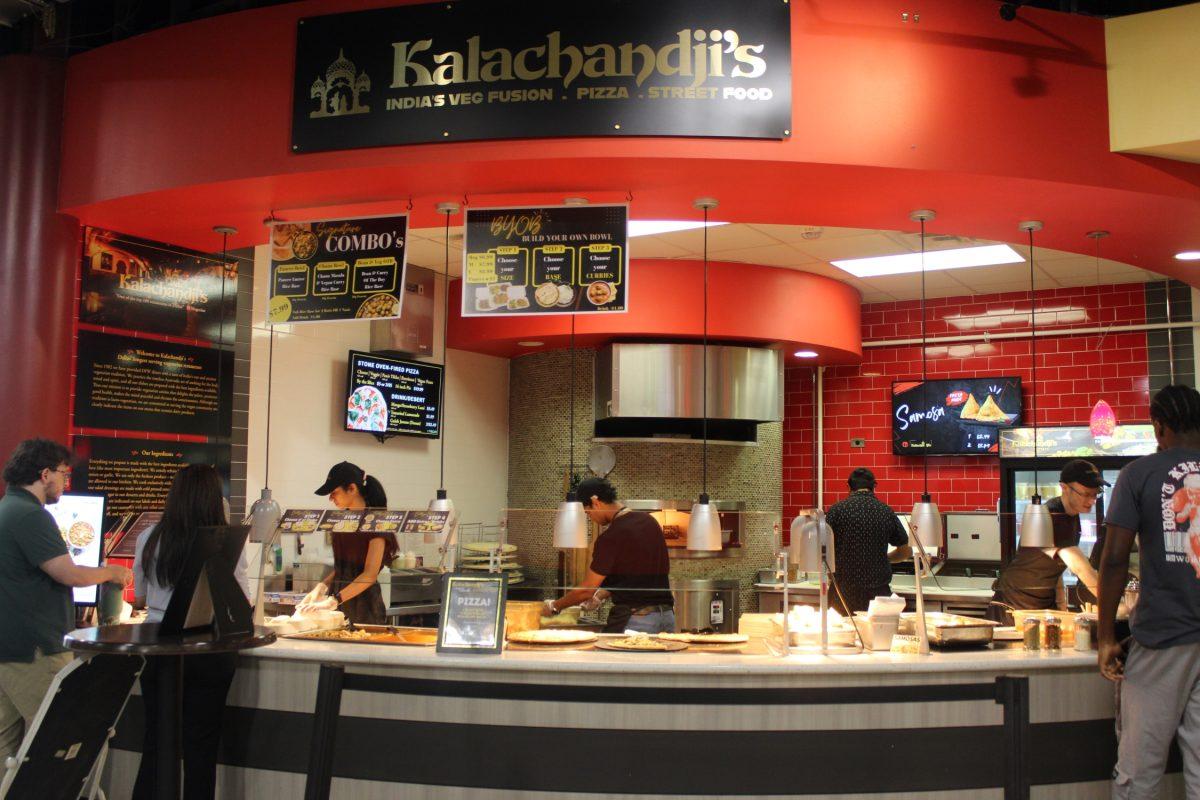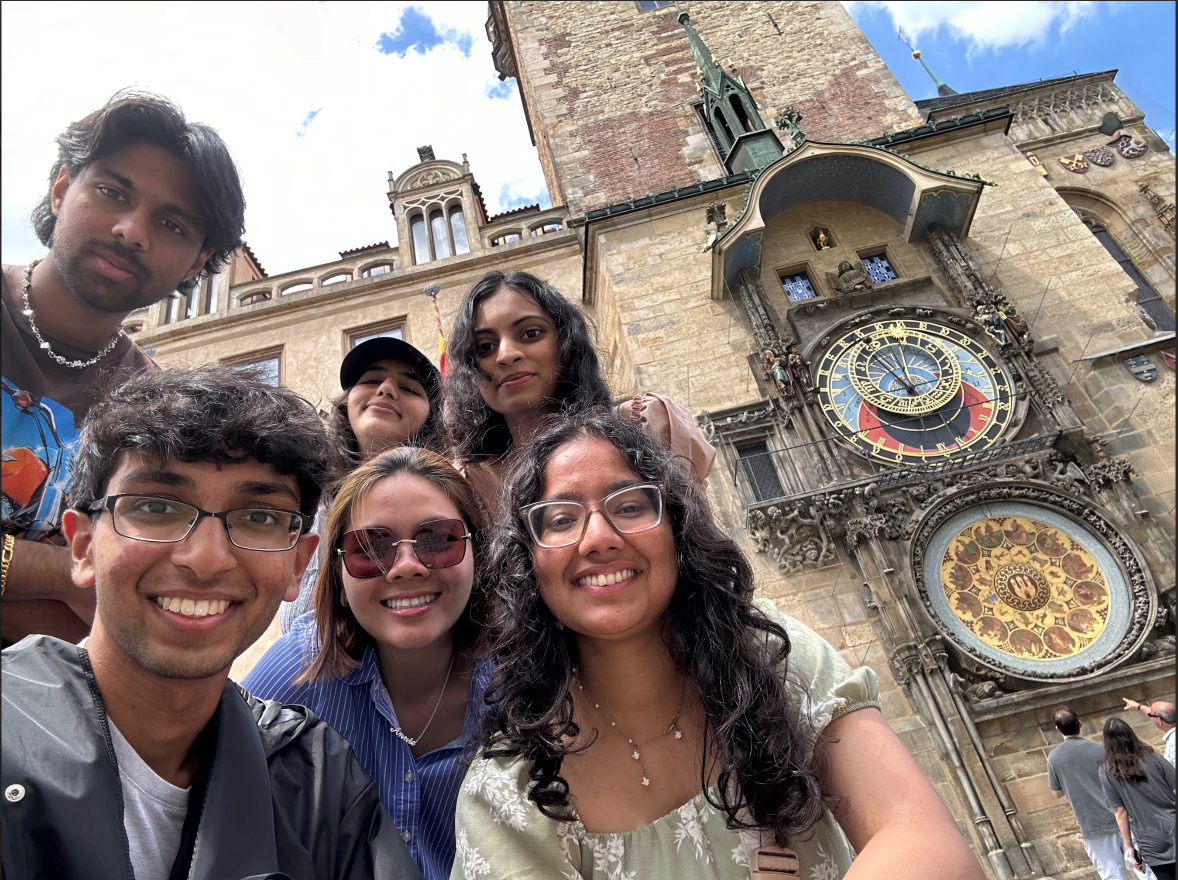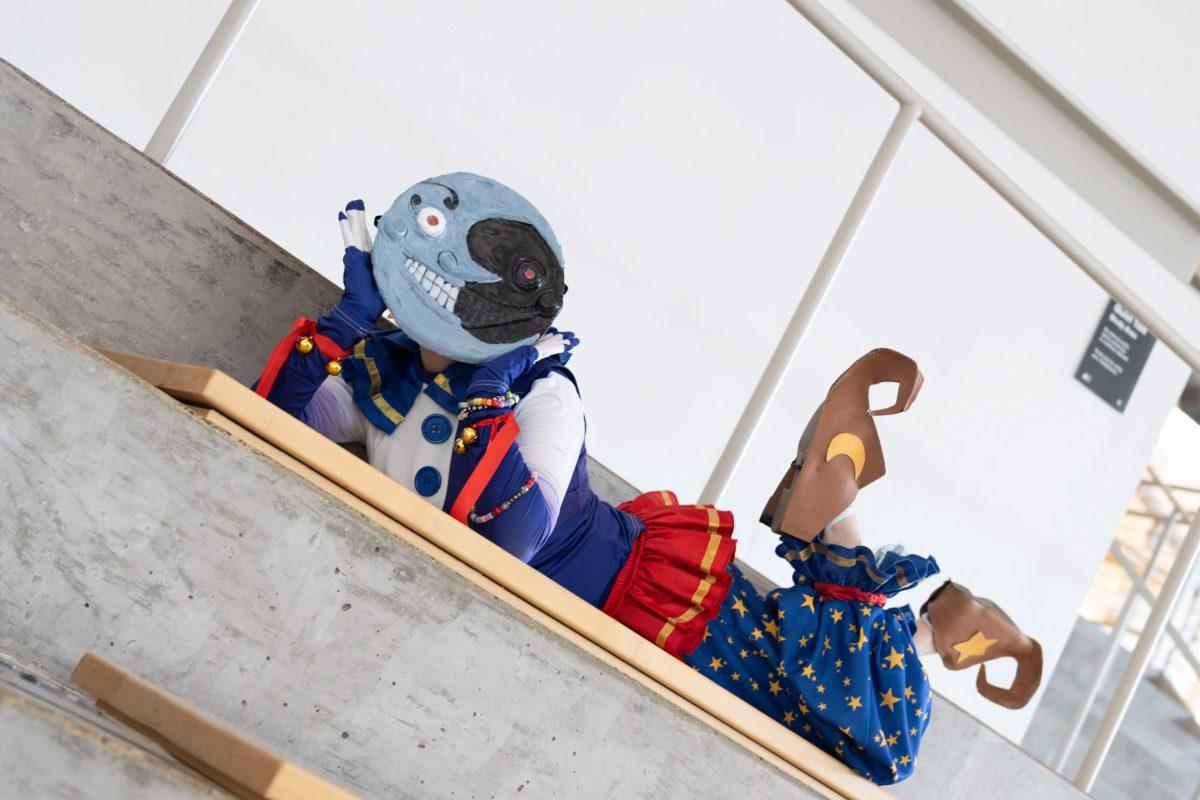Correction, Aug. 22: The graphic accompanying this article incorrectly states how much of UTD’s energy consumption comes from nonrenewable sources. The correct figure is 64%. The graphic also includes a quote from Garapaty that was not attributed.
Correction, Sept. 1: A previous version of this article incorrectly stated which location Chandu Garapaty said had poor sidewalk maintenance. Garapaty said sidewalks in the DART service area are often poorly maintained.
August rang in with a full week of triple-digit degree weather in North Texas — leaving this July as the 11th warmest July in the past 130 years. In the middle of a blazing heat wave, UTD welcomes back its students to a campus full of projects combating the effects of climate change while still having a long way to go.
Sustainable Transportation
With 24,300 full-time students at UTD as of fall 2023, only 20% — 5,500 students — can live on campus, resulting in UTD being a majority commuter school that must accommodate thousands of cars. A car creates 4.6 metric tons of CO2 gas per year on average; Dallas houses over 4 million cars registered with the Department of Transportation. UTD cuts down on students’ need for cars by offering free DART GoPasses, which provide free public transportation directly from campus and across the DFW metroplex.
Despite its convenience and service to thousands of Comets, the DART system is not without its problems. Riders across the DFW metroplex complain about safety issues, delays and what urbanists call the “last-mile problem.” Chandu Garapaty, a healthcare studies senior and president of Comets for Better Transit, said while these issues have a large effect on DART, they don’t stop it from being a great resource for students.
“I think that DART has done a really, really great job at providing the transit that they can,” Garapaty said.
Garapaty said that in 2023, the 883 route had the most traffic of the DART routes, averaging 4,820 daily trips. Garapaty said that frequent routes are just one part of what UTD and its surrounding communities need to do to become transit-oriented. Garapaty said sidewalks in the DART service area are often poorly maintained or entirely nonexistent and the sprawling parking lots are massive and hard to cross, leading people to become more car dependent.
“But what’s necessary now is for our cities and the university to provide good land use around those transit nodes, like train stations and bus stops,” Garapaty said. “When you get off the bus or train, everything around it is kind of car-dependent and sprawly, and you don’t necessarily have a really good walkable development around it.”
Green Buildings and Energy
Nine buildings on campus are certified silver or higher in Leadership in Environmental and Energy Design for adhering to sustainable building and management practices like water conservation or daylight harvesting. Four buildings are equipped with solar panels, with Parking Structure 1 operating with net-zero energy costs.
According to the UTD 2023 Sustainability Tracking, Assessment and Rating report, 36% of the energy the university uses comes from renewable sources, which need to be imported. More than 45% of the energy used on campus is purchased, which can raise costs in situations like the 2021 Texas freeze.
Other schools in the UT system like UT San Antonio and UT Arlington have similar energy purchasing rates. Compared to UT Austin, whose power plant supplies 100% of energy and heating to the campus and produces less pollution than the city grid itself, UTD’s power plant has much to improve upon. The UT Austin power plant makes use of both its heating and power, which allows the on-campus plant to utilize the excess heat created from energy production to heat buildings and provide steam. UTD has yet to utilize combined heat and power technology on campus.
The Eco Hub
Established in 2019, the Eco Hub is a 20,000 square-foot facility housing the Luna Farm, an apiary and research project led by bioengineering professor Shalini Prasad.
The Luna Farm houses an orchard and various crops, such as peas, beans and radishes. All of the produce grown at Luna Farm is donated to the Comet Cupboard, the on-campus food pantry, to make more fresh foods available to food insecure Comets.
The UTD apiary is a collaboration between biology professors Scott Rippel and Christina Thompson and the Office of Sustainability, capable of housing up to two dozen beehives. Since its creation in 2012, the apiary has been operated entirely by student volunteers with Thompson and Rippel supervising. Maintaining bee populations and bee-friendly environments helps improve biodiversity, ecosystem health and sustainable honey production.
According to Thompson, rising temperatures in the DFW area haven’t affected the bees, but the colder winters pose a much larger concern as the honeybees haven’t properly evolved to live in colder conditions.
“[Honey] bees have ways of air conditioning. They go to water sources and get wet and they fan their wings,” Thompson said. “They will change how they’re grouped in the hive to [create] air channels … they’ve got that figured out.”
Problems also arise for solitary native bee species. As warmer climates lead to shifting blooming patterns for flowers, species that depend on one or two specific plants are struggling to adapt. Rippel and Thompson are interested in expanding the species they work with. However, since the Bee Campus USA and the Office of Sustainability is primarily student-led, lack of interest meant the project didn’t progress.
As a part of the Bee Campus USA program, UTD has pledged to reduce harsh pesticide use, but bees can travel up to two miles to collect nectar and pollen. Within that radius lies the Canyon Creek Country Club, which houses a golf course and makes use of pesticides, which can be harsh on bees.
“That’s just part of living in an urban area, and there’s nothing that we can do to prevent that,” Rippel said. “We just have to work together.”

